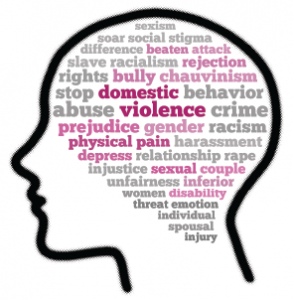
Zurainy Zain / shutterstock.com
A 60-year-old woman with a six-month history of retroperitoneal fibrosis transfers her care to you. She initially presented with severe bilateral flank pain radiating to the abdomen and chest. A computerized tomography (CT) angiogram of the abdomen demonstrated an infrarenal abdominal aortic aneurysm surrounded by a thick inflammatory rind entangling the left renal vein and ureter, resulting in left hydronephrosis and 70% stenosis of the proximal left renal artery.
She underwent percutaneous endovascular repair of the aortic aneurysm and was started on prednisone and mycophenolate mofetil. She subsequently required bilateral ureteral stents and left nephrostomy tube placement. Her course of treatment has been complicated by numerous nephrostomy tube malfunctions requiring repositioning in addition to the anticipated periodic ureteral stent exchanges.
As you review her chart, you note that she has had six inpatient admissions, approximately one per month, since the onset of her symptoms. At this initial visit she is, objectively, doing well. You note that her inflammatory markers—once markedly elevated—have normalized. Additionally, serial abdominal CT scans show significant improvement in periaortic inflammation. She is tolerating her medications and reports that her pain has improved. However, the objective improvement in laboratory data and imaging does not reflect the tearful woman sitting in front of you.
As you look to her to speak, she bursts into sobs. Her narrative is not one of steady improvement in the face of life-threatening illness, but one of the emotional, psychological and physical toll this disease has exacted. Upon further questioning, you are surprised to learn that she is not concerned for her own health. Rather, she is anxious about her husband.
You learn that her husband has been angry with her and that he blames your patient for her medical problems. At best, he fails to engage with her and withdraws when she tries to initiate conversation. At worst, he is preoccupied with medical bills, prolonged hospitalizations and the constant threat of emergency department visits. She denies that he has been physically abusive or threatening. She confesses that she is devastated and is uncertain their marriage will survive. You confirm that she feels safe at home and that she is neither concerned for her own safety nor for that of her husband.
In a state in which no statutes govern mandatory reporting of domestic violence, sufficient suspicion of partner violence may invoke a physician’s ethical obligation—albeit not a legal one—to report their suspicion to the governing body.
She next reveals that her husband will soon be seeing you as a new patient.
Is there enough evidence in this case to raise suspicion of physical abuse? What is legally required of a physician regarding the reporting of suspected domestic abuse? Does the fact that her husband will also be your patient have any bearing on the situation? What are your ethical obligations to your patient?
Discussion
Domestic and intimate partner violence (IPV) is prevalent and occurs much more frequently than is reported, detected or even suspected. According to the Centers for Disease Control and Prevention’s 2015 National Intimate Partner and Sexual Violence Survey, “about 1 in 4 women and 1 in 10 men experienced contact sexual violence, physical violence, and/or stalking by an intimate partner and reported an IPV-related impact during their lifetime.”1 (See box, below.)
Physicians are in a unique position, having a privileged perspective into a patient’s life not shared by others, and thus, have an opportunity to detect domestic violence. Chronic illness is associated with an increased risk of financial strain, relationship stress and depression, all of which could contribute to an increased risk of domestic neglect and abuse. It is quite possible, therefore, that you may encounter a situation in your rheumatology practice in which you either believe abuse has occurred or you at least ask the question.
This patient’s clinical scenario is an example of intimate partner strain and generates questions in several dimensions. First, what are the legal aspects of the case, and what are the requirements of the physician under federal and state laws?
Domestic violence is broadly addressed in several federal laws, including the Violent Crime Control and Law Enforcement Act of 1994.2 State-specific laws also exist and “require the reporting of specified injuries and wounds, and suspected abuse or domestic violence for individuals being treated by a healthcare professional.”3
Every state except for Kansas, New Mexico and Wyoming has laws regarding mandatory reporting of violence.3 These laws vary significantly; you should become knowledgeable with the laws in your state. For example, there are states in which only head and spinal injuries treated by medical providers must be reported (Alabama), states in which reporting is required only for violence caused by guns or knives (Mississippi), and states, such as California, which have more extensive reporting requirements, protocols, screening and training for healthcare professionals.3,4-6
In addition to the legal aspects you must consider, the question of ethical responsibility to the patient is raised. As is encapsulated in the guiding ethical principle of beneficence, physicians are required to do first and foremost what is in the best interest of the patient.7 This ethical principle is coupled with the principle of non-maleficence, of doing no harm.7 The physician’s ethical duty is deeply ingrained from the time we are medical students; it is unequivocal that these guiding ethical principles apply even in the absence of established law. In a state in which no statutes govern mandatory reporting of domestic violence, sufficient suspicion of partner violence may invoke a physician’s ethical obligation—albeit not a legal one—to report their suspicion to the governing body.
Decision making becomes increasingly complex when ethical and legal considerations clash. When such conflicts arise, you must carefully determine which guiding principles carry the most weight. For example, you could envision a case in which mandatory reporting is not in the patient’s best interest (i.e., if reporting leads to increased violence at home or disengagement with the treating physician or with the healthcare system). If a patient argues against mandatory reporting for these reasons, then the principle of patient autonomy may become most relevant. Many would agree that legal requirements would supersede the principle of beneficence in this case; however, situations certainly exist in which no obvious answer is apparent. In these ambiguous cases, it is often helpful to enlist the assistance of an ethics review board, which are established at many medical institutions.
Recommendations
Based on my patient’s description of her domestic situation, I do not have reasonable cause to suspect that her husband’s behavior constitutes domestic violence as defined by the state in which I practice rheumatology; the mandatory reporting statute of my state does not apply. Nor do I have an ethical obligation to report this domestic situation.
My determination of obligation in mandatory (legal) reporting should be grounded entirely on the facts as I understand them and the level of suspicion of domestic violence. The fact that my patient’s husband may become my patient should not influence any decision to appropriately report to the oversight institution if IPV is suspected. Conversely, if he were established as my patient, I would then have an ethical obligation to him as well, and his interests would necessarily enter into my calculus. Most would maintain, however, that a legitimate suspicion of spousal abuse would supersede the physician-patient relationship.
In this clinical scenario, my patient’s relationship with her husband is significantly strained, and she is clearly suffering. Under the principle of beneficence, my ethical obligation is to help my patient in whatever way I can. I believe that both my patient and her husband would benefit from psychotherapy, couples counseling and/or treatment by a psychiatrist. There is no easy solution to this situation, but it is my ethical duty to provide access to the resources that would be most beneficial. I make this recommendation to her, and she is relieved to know that avenues for help are available.
Conclusions
Although this representative clinical scenario does not illustrate an example of domestic violence that must be reported, it does bring to light an important dimension of patient care. Physicians seek to advance the well-being of patients through clinical evaluation and management on a daily basis, but it is equally important—and perhaps more challenging—to ensure patient safety at home.
It is entirely possible that you will encounter domestic violence or suspected abuse in your practice; given the numbers, many of us likely have already been confronted by a similar situation. Being familiar with the laws concerning mandatory reporting in your state will provide legal guidance to complex encounters.
As physicians, we already seamlessly incorporate justice, patient autonomy, beneficence and non-maleficence into our daily medical practice; we should, therefore, view patient safety, including domestic violence, through the lens of these guiding ethical principles.
Sarah F. Keller, MD, graduated from the Massachusetts General Hospital Rheumatology Fellowship Training Program in 2016. She practices rheumatology in Crestview Hills, Ky.
Marcy B. Bolster, MD, is associate professor of medicine at Harvard Medical School and director of the Rheumatology Fellowship Training Program at Massachusetts General Hospital in Boston.
Acknowledgment
The authors would like to thank Jane Kang, MD, MS, for her invaluable feedback on this article.
Fast Facts
In the 2015 National Intimate Partner and Sexual Violence Survey, IPV-related impact is defined as experiencing any of the following: being fearful, concerned for safety, injury, need for medical care, needed help from law enforcement, missed at least one day of work, missed at least one day of school.
The following effects were also included in the lifetime estimate only: any post-traumatic stress disorder symptoms, need for housing services, need for victim advocate services, need for legal services and contacting a crisis hotline.
For those who experienced rape or were made to penetrate by an intimate partner, it also includes a lifetime estimate of having contracted a sexually transmitted infection or having become pregnant.
References
- Smith SG, Zhang X, Basile KC, et al. The National Intimate Partner and Sexual Violence Survey (NISVS): 2015 data brief—Updated release 2018. National Center for Injury Prevention and Control, Centers for Disease Control and Prevention. 2018 Nov.
- 34 U.S.C. §12291 et seq. (2012).
- Durborow N, Lizdas KC, O’Flaherty A, et al. Compendium of state and U.S. territory statutes and policies on domestic violence and health care. Futures Without Violence. 2013.
- AL Code §22-11C-5 (2017).
- MS Code §45-9-31 (2017).
- CA Penal Code §11160–11161 (2018).
- Beauchamp TL, Childress JF. Principles of Biomedical Ethics, 2nd ed. Oxford, England: Oxford University Press; 1983:148–182; 106–147.
Editor’s note: Do you have an ethical dilemma you’d like to see discussed in this forum? Contact us via email at [email protected].



